What is Depression?
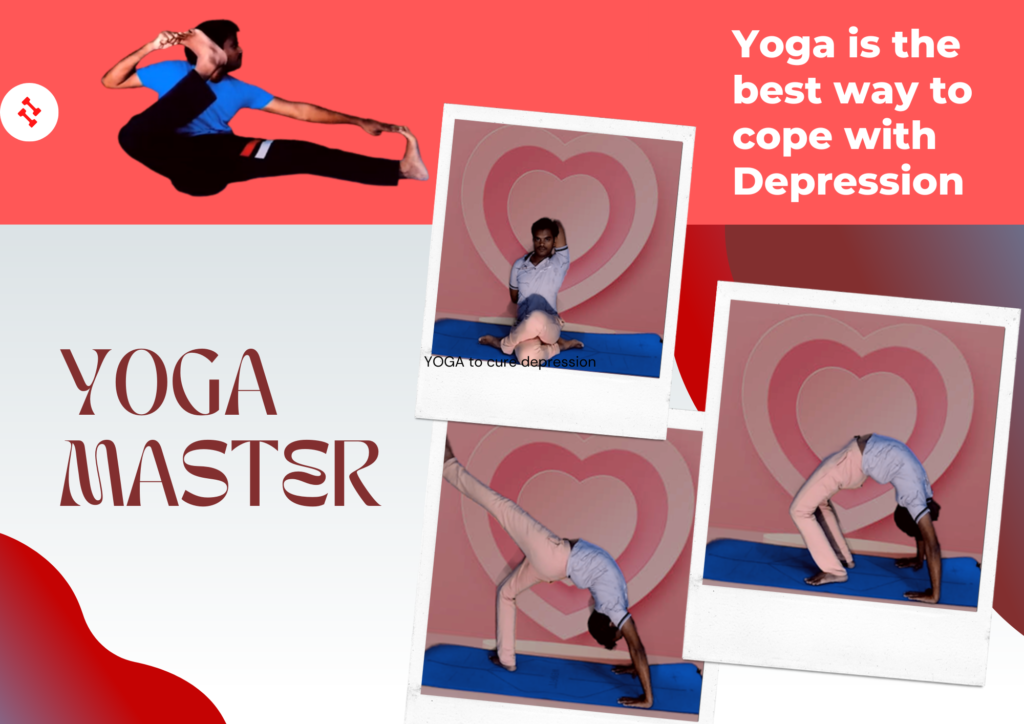
Depression is a mental health disorder that can have a significant impact on an individual’s life. It can cause feelings of sadness, hopelessness, and worthlessness, as well as physical symptoms such as fatigue and difficulty concentrating, eating, sleeping, or enjoying activities you once enjoyed. It can even result in suicidal thoughts.
It is important to understand how depression comes into our lives in order to be able to recognize the signs and symptoms of depression and seek help when needed. I want to discuss the causes of depression, its effects on our lives, and how we can manage it.
Depression Global Research :
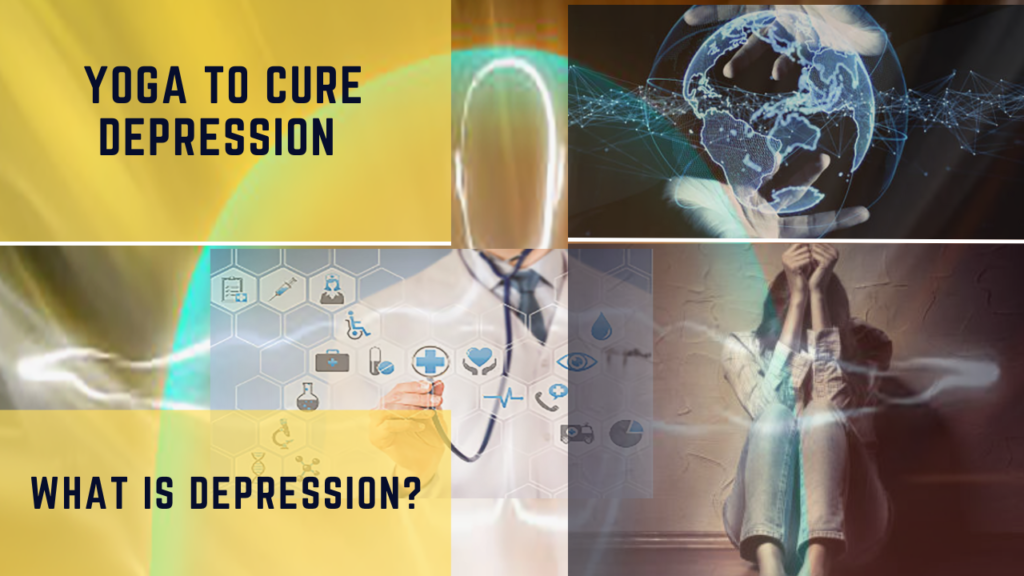
Globally more than 310 million people (5%) are suffering from depression which makes it a leading mental disorder throughout the world. What happens in our system because of depression? Healthy hormones like serotonin, and dopamine, are not secreted in our body under more and more negative state moods, a bad mind is disturbed you are personally sad, and you see only negativity all around the world. You will feel like there is no exact reason to smile, and you will try to find a reason to laugh. To cope with depression you really people take anti-depression medicine pills to cure it. And they feel that the pills which are chemicals are going to settle the mind. But you should understand any pill you take, how would have a good effect on a specific area as well as it would give a bad effect on other areas in the body. The person who always thinks negatively with full of fear. This chemical adjustment through pills is a very temporary phenomenon.
What are the causes of depression?
Heredity, hormonal imbalance, low serotonin and norepinephrine, nutritional deficiency, mental stress, loss of a parent or spouse, losing a job, menopause, past emotional abuse, and lack of sleep at night.
Lack of freedom of decision is controlled by the parent, spouse, or father-in-law.
Changes in lifestyle due to work. Lack of social support. Being overwhelmed with responsibilities or single parenting.
Trauma due to physical or mental abuse.
Due to watching terrible news continuously.
Due to often failure in accomplishing the goal.
Due to triggering sudden situations often in mind.
Unable to cope with the situations that which are not want to see in life.
Addictions like smoking, tobacco, lot of alcohol consumption may lead to getting depression.
Increasing evidence shows that environmental and lifestyle factors can influence epigenetic mechanisms such as DNA methylation, histone acetylation, and microRNA expression. There are very less chances known for certain about the genetic basis of the disease. If we tell there are lengthy points to discuss depression.
There are important things we should follow in our routine to deal with depression and cultivate a healthy lifestyle.
To recover from depression, it is important to cultivate a healthy lifestyle. This means consuming healthful, workout often, and getting sufficient sleep. It also means taking care of your mental health by practicing stress relief and self-care. By taking care of yourself, you can start to feel better and take steps toward recovery.
* Sunlight deficiency of brain function becomes poor. Through Sunlight we could get serotonin in the body, it boosts your brain’s mood uplifting and the brain can tolerate things that are things not right in the world
* To be physically and socially active Go for a morning walk every day before practicing yoga.
* You should sleep properly. A person has to master this art of sleep consciousness to relax.
* Go for a swim and get a frequent head massage.
* Practice meditation every morning and evening after work.
* Maintain a proper diet and avoid toxic food.
* Be friendly to happy people, and spend more time with them. You could get inspiration from them.
* Listen to good music which gives peaceful
* Laughter increases the endorphins your brain releases. Activate and relieve your stress response.
* After 7 PM avoid Television and IT devices such as cell phones, tabs laptops, as much as possible. If you’re using it for emergency work keep it far away.
* Try to be friendly with nature as much as possible
* Listen to a spiritual guru talk every day for at least half an hour with your family, spirituality moves you on the correct path.
How does yoga help to cure Depression?
powerful tool for managing depression. It can help to reduce stress, increase self-awareness and self-control; stimulate the endocrine glands, and the hypothalamus, increase mood-enhancing chemicals such as serotonin, dopamine, endorphin, and norepinephrine in the brain and reduce the secretion of the stress hormone cortisol. Yoga helps to create a sense of balance in the body and mind, which can be beneficial for those suffering from depression. It also encourages mindfulness and relaxation, which can help to reduce symptoms of depression.
Serotonin, dopamine, endorphin, and norepinephrine are powerful chemicals in the brain which regulate physical and mental health. Long-term stress, exhaustion, long-term use of antidepressants, alcohol, an unhealthy diet, and excess caffeine cause serotonin deficiency. This creates fatigue, anxiety, lethargy, mood fluctuations, low motivation, fear, and sadness.
Push is physical freshness, agility, increased alertness, clarity, motivation, self-confidence, joy, and emotional stability. Longer exhalations during pranayama, mantra chanting, and meditation will remove distracting thoughts and clear consciousness.
Additionally, yoga can help to improve physical health by increasing strength and flexibility, which can lead to improved mental health as well.
1. PASCHIMOTTANASANA
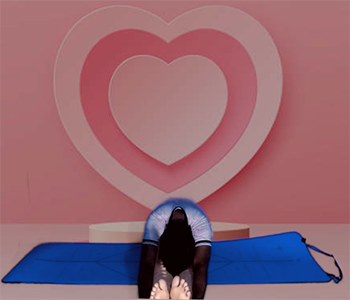
Paschimottanasana, or Seated Forward Bend, is a yoga pose that can be used to help alleviate symptoms of depression. This pose helps to relax the body and mind, while also stretching the spine and hamstrings. It can be used as part of a regular yoga practice to help reduce stress and anxiety levels. Additionally, it can help to improve concentration and focus, which are important for managing depression. Paschimottanasana is an effective way to bring balance back into your life and help you cope with depression in a healthy way.
2. SUPTA BUDDHA KONASANA

Paschimottanasana, or Seated Forward Bend, is a yoga pose that can be used to help alleviate symptoms of depression. This pose helps to relax the body and mind, while also stretching the spine and hamstrings. It can be used as part of a regular yoga practice to help reduce stress and anxiety levels. Additionally, it can help to improve concentration and focus, which are important for managing depression. Paschimottanasana is an effective way to bring balance back into your life and help you cope with depression in a healthy way.
3. DHANUR VAKRASANA
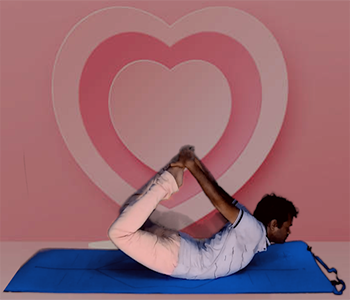
When a person feels tired, nervous, unhappy, or lacking energy all the time there many things happen in depression so what do we do at that time? The person can cope with these all by doing DHANUR VAKRASANA.
When you do this asana the compression happens in the naval region which is the source of lots of energy so you get more energy into your body. A backward bend just represents that your lifting your body up, by doing an upward-lifting posture really brings a mood that would be the very positive mood in your system. Learn how to do Dhanur Vakrasana
4. USTRASANA
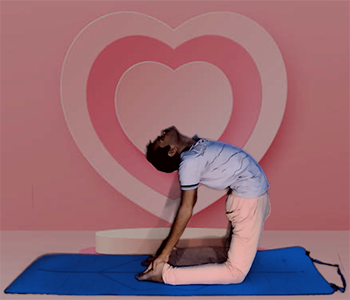
Ustrasana, or the Camel Pose, is a powerful yoga pose that can help to reduce symptoms of depression. This pose helps to open up the chest and abdomen, allowing for improved breathing and increased circulation. It also helps to stretch the spine and hips, which can help to reduce tension in the body. Additionally, Ustrasana can help to improve posture and balance while calming the mind. Practicing this pose regularly can be beneficial for those suffering from depression as it helps to reduce stress levels and promote relaxation.
5. EKAPADA ADHOMUKHA SWANASANA

Ekapada Adhomukha Swanasana is one leg downward dog pose. When you do this pose where you’re bending forward one leg is up system neurotransmitters of our brain get affected then automatically good circulation to the brain goes that person is energized, the person feels active.
In depression, a person has low self-esteem that doesn’t even think about somebody which creates a hell of a problem. So here when you do such a posture, it really improves your self-esteem, you feel so strong, and capable, and you feel you can do something that’s a great thing in life.
6. DIAPHRAGMATIC EXERCISE.
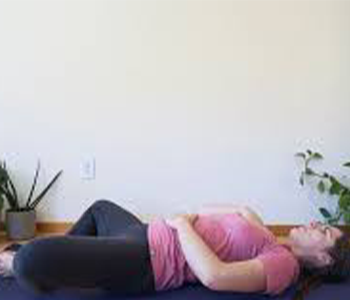
What happens when the person is usually in depression is the focus on goals and sleep pattern would be disturbed. And the circadian cycle would be disturbed. When the person wants to sleep he can’t sleep. And that affects terribly in doing this abdominal exercise. It is observed that when a person is under negativity in tension the abdomen becomes very tight and the diaphragm hardly moves. So we need to learn how to move the diaphragm strongly. When we are in a lying down position diaphragm can move two inches up and down. When we are in a sitting position it goes one and a half up and down. When we are standing one inch up and down.
7. VEERABADRASANA
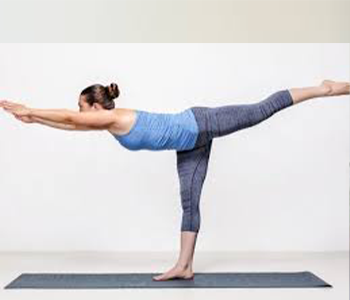
Veerabadrasana, also known as the Warrior Pose, is a powerful yoga pose that can help to reduce symptoms of depression. This pose helps to increase energy levels and improve focus, while also calming the mind and body. It can be used as part of a regular yoga practice or as a stand-alone exercise for those who are struggling with depression. By practicing Veerabadrasana regularly, individuals can experience improved moods and increased feelings of well-being. Additionally, this pose can help to reduce stress levels and promote relaxation.
8. SURYANAMASKER
Suryamaskar is best to cope with depression. Because It is a series of 12 postures that are performed in a specific sequence, and it has been found to be effective in reducing symptoms of depression. Studies have shown that regular practice of Suryamaskar can help reduce stress levels, improve mood, and increase energy levels. It can also help to improve concentration and focus, as well as reduce anxiety. By practicing Suryamaskar regularly, individuals can experience improved mental health and overall well-being.
9. SARVANGASANA
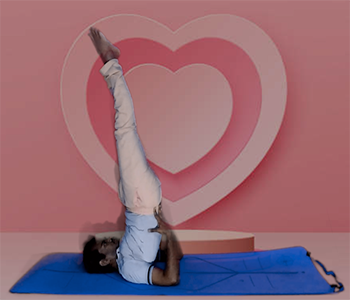
Sarvangasana, also known as the shoulder stand pose, is a yoga posture that has been used for centuries to help reduce stress and depression. This pose helps to improve circulation and stimulate the thyroid gland, which can help to regulate mood. It also helps to strengthen the core muscles and improve balance. Practicing Sarvangasana regularly can help to reduce feelings of depression by calming the mind and body. Additionally, it can help to increase energy levels and promote better sleep quality. By practicing this pose regularly, you can experience improved mental health and an overall sense of well-being.
10. HALASANA
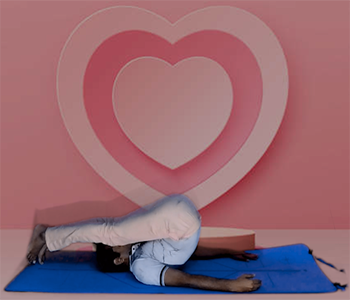
Halasana rejuvenates our body from within and lets all the strange thoughts out into the trash. Doing it regularly helps the body to recover from any stomach problems like constipation, excess belly, lethargy, and fatigue. The flexibility gained by the body automatically translates into regaining confidence which helps to overcome depression or any mental problems.
11. SETUBANDASANA
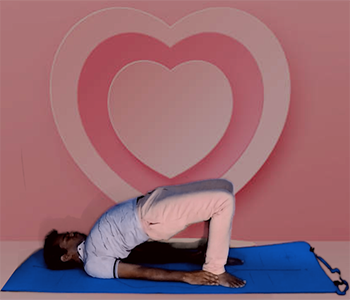
Setubandasana, also known as the Bridge Pose, is a yoga pose that can be used to help alleviate symptoms of depression. This pose helps to open up the chest and abdomen, allowing for improved breathing and relaxation. It also helps to stretch the spine and hips, which can help reduce tension in the body. Additionally, this pose can help to improve circulation throughout the body and increase energy levels. By practicing Setubandasana regularly, individuals with depression may find relief from their symptoms and an overall sense of well-being.
12. BHUJANGASANA

Bhujangasana, also known as the Cobra Pose, is a yoga posture that has been used for centuries to help reduce stress and depression. This pose helps to open up the chest and abdomen, allowing for deeper breathing and relaxation. It also helps to strengthen the spine and core muscles, which can help improve posture and reduce back pain. Additionally, Bhujangasana can be used as a form of meditation to help clear the mind of negative thoughts and feelings associated with depression. By practicing this pose regularly, one can experience improved mental clarity and emotional balance.
Remember, the sequence is thoughtfully designed for everyone people suffering from mild to severe depression. Avoid positions that cause discomfort and pain. Practice often with determination and a nice attitude.
PRANAYAMA
Pranayama is directly effective in auto-cognitive at the psychophysiological effect on our body, when you do pranayama’s brain goes into an alpha wave state that is a very calming and very energetic state. Duration of each 15 minutes.
1. ANULOMA VILOMA PRANAYAMA
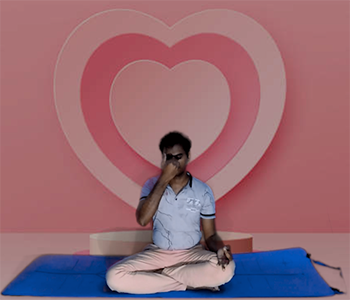
Anuloma Viloma Pranayama, also known as alternate nostril breathing, is an ancient yogic practice that has been used for centuries to reduce stress and anxiety. It is a powerful tool for calming the mind and body and can be especially helpful in managing depression. By focusing on the breath and alternating between nostrils, Anuloma Viloma Pranayama helps to balance the nervous system relaxes nerves, and brings about a sense of peace balances hormones.
Improves self-confidence and self-esteem. It can also help to reduce symptoms of depression such as fatigue, insomnia, irritability, and difficulty concentrating. With regular practice of Anuloma Viloma Pranayama, one can experience improved mental clarity and emotional well-being.
2. KAPALABHATI PRANAYAMA
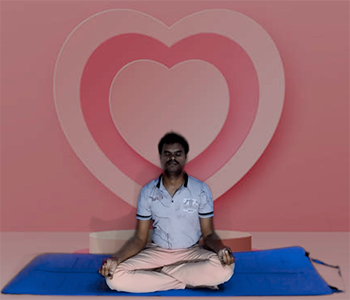
Kapalabhati pranayama is said to be helpful in relieving depression. Removes fatigue, and refreshes the brain. Reduces mental stress, controls eating and improves overall energy. This is said to help cleanse the lungs and improve circulation. It is also said to help calm the mind and ease anxiety.
3. BRAHMARI PRANAYAMA
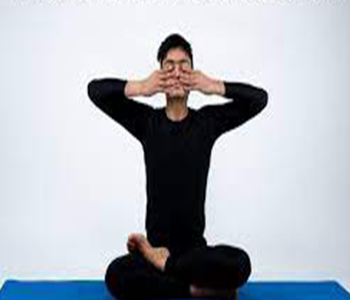
Brahmari pranayama is an effective breathing technique that can help to ease depression. This pranayama involves making a humming Firefly sound while breathing out deeply. The vibration of the sound helps to soothe the mind and promote a sense of calmness. This can be an extremely helpful tool in managing depression, anxiety, and stress.
4. UDGEETH PRANAYAMA



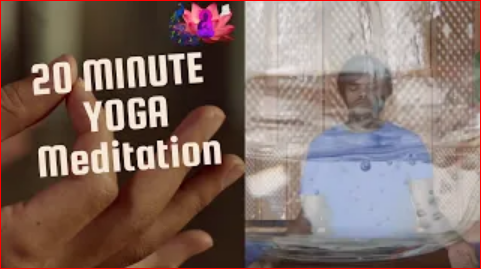
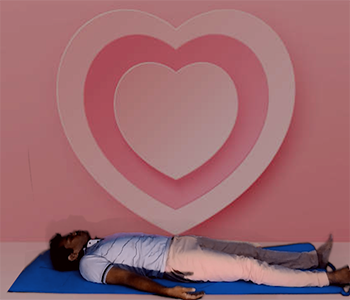


 drinking every day two litters of water is right for relieving intellectual tension.
drinking every day two litters of water is right for relieving intellectual tension.
Excellent Information in detailed 🙏🙏🙏
Thank you for your compliment
A lot of people are facing depression this content is beneficial, Thank you, bro
Thank you, Bro
May God bless you with good health and happiness always peaceful thank you for your valuable time and information in detailed 🤠✝️
Jesus Christ always with you in every sanskar pranam _
Thank you Krish